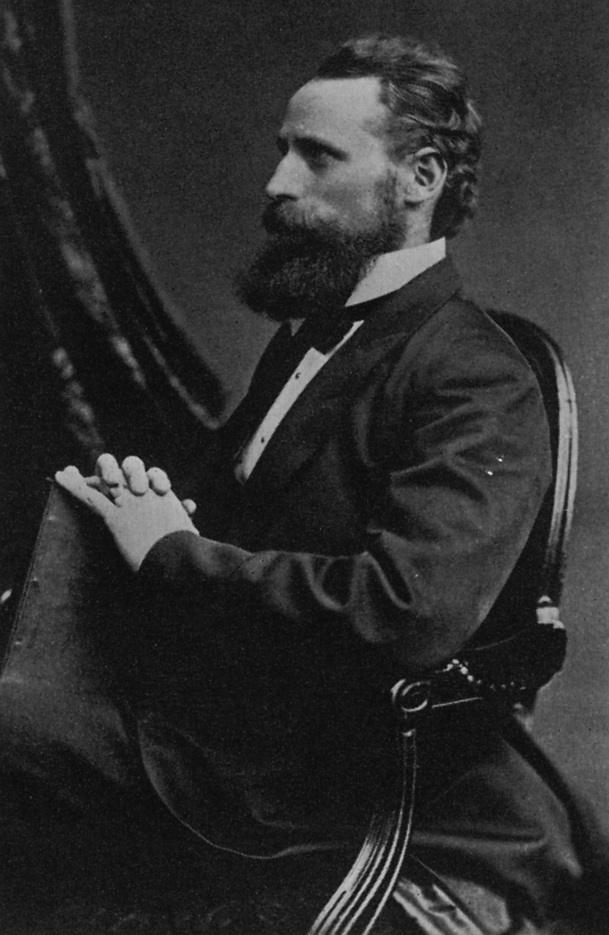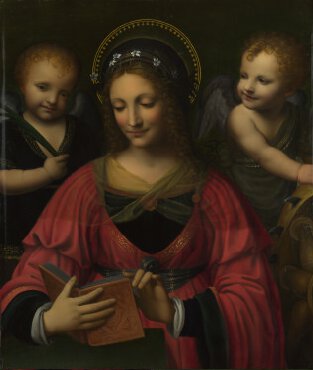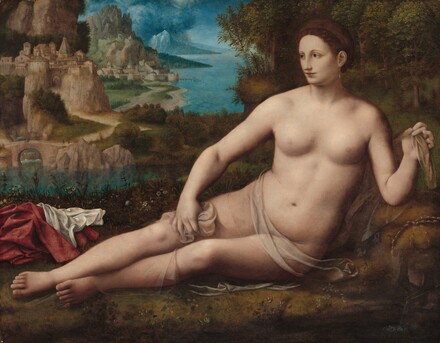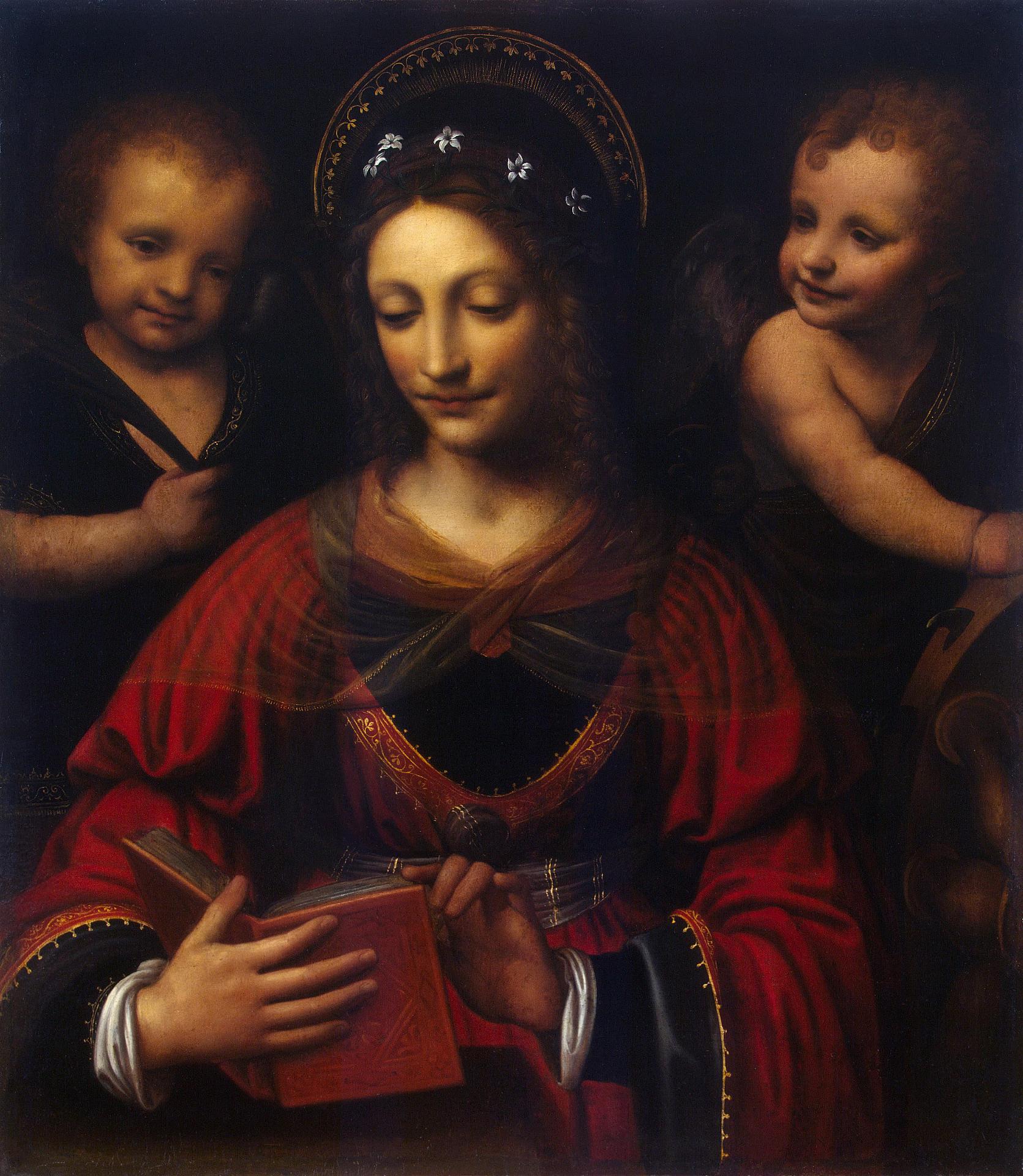M
I
C
R
O
S
T
O
R
Y
O
F
A
R
T
........................................................

NOW COMPLETED:

........................................................
MICROSTORY OF ART
ONLINE JOURNAL FOR ART, CONNOISSEURSHIP
AND CULTURAL JOURNALISM
........................................................
INDEX | PINBOARD | MICROSTORIES |
FEATURES | SPECIAL EDITIONS |
HISTORY AND THEORY OF ATTRIBUTION |
ETHNOGRAPHY OF CONNOISSEURSHIP |
SEARCH

........................................................



 >MICROSTORIES
>MICROSTORIES
- Richard Serra
- Martin Scorsese
- Claude Simon
- Sunshine
- Werner Herzog
- The Creation
- Marcel Duchamp
- Nino Rota
- Wölfflin and Woolf
- Hansjörg Schneider
- Kraftort Arkadien
- Visual Biography
- Schlaraffenleben
- Die Geisteswissenschaften
- The Voyeur
- Buzzword Sustainability
- Paul Verlaine
- Tao Yuanming
- New Beginning
- Seneca
- Still Lifes
- Charles Baudelaire
- Frédéric Chopin
- The Art History of Sustainability
- Wang Wei
- Solarpunk
- Historians of Light
- Lepanto
- Renaturalization
- Plates
- Snow in Provence
- Learning to See
- Picasso Dictionaries
- Peach Blossom Spring
- Picasso Tourism
- Tipping Points
- Sviatoslav Richter
- Weather Reports
- Treasure Hunt
- Another Snowscape in Picasso
- Picasso in 2023
- Dragon Veins
- The Gloomy Day
- The Art of the Pentimento
- Reforestation
- The Status of Painting
- Emergency Supply
- Punctuality
- Watching Traffic
- Zhong Kui
- How Painting Survived the 1990s
- Confirmation Bias
- Sustainability and Luxury
- Garage Bands
- Picasso and Artificial Intelligence
- Eyes of Tomorrow
- Picasso in 2023 2
- Gluing Oneself to Something
- Suburbia
- Bamboo
- Sustainability and Carpe Diem 1
- Interviews with Bruegel
- Sustainability and Carpe Diem 2
- Coffee & Sugar
- Bamboo 2
- Picasso in 2023 3
- Sustainability and Carpe Diem 3
- Cherry Orchard
- Old Magazines
- Chance
- Nick Drake
- Harlequin
- The Smartphone & the Art Book
- Atlas Syndrome
- The Kitchen
- Atlas Syndrome 2
- Consideration
- Tori Amos
- School
- Orchard Auctioning Day
- The Hundred Years’ War
- Sócrates
- Chameleon
- Nefertiti Bust
- Picasso as a Computer
- Sunflowers
- Philemon & Baucis
- Ode to the Radio
- Childhood
- Wimmelbild
- Restitution
- Nick Drake 2
- Wishful Thinking
- Sundays
- The Independent Scholar
- September
- The Fisherman by Pirosmani
- Microadventure
- Sociology
- Salvator Mundi
- Chillon
- Appassionata
- Amber
- Homer
- Berlin
- Planet Walk
- Improvisation
- Seeing Picasso
- These Nice Kids
- Robber
- The One
- The Sea Turtle
- Zoo
- Through the Hush
- Wunderkammer
- I Do Not Seek, I Find
- Shopping Mall
- Food Hamper
- The Secretary
- This Gate
- Nor Rainy Day
- House on a Hill
- Beautiful Island
- Second-hand Bookstore
- Flat
- Slap in the Face
- Serra, Wenkenpark
- Apologies
- The Bells
- Nordmann Fir
- Picasso Wanting To Be Poor
- Picasso, Pirosmani
- A Brief History of Sculpture
- 24 Sunsets
- Rusty Phoenix
- Glove
- Wintry Stanza
- A Song
- Like A Beatle
- Catching An Orange
- Solar Bees
- Permaculture

 >FEATURES
>FEATURES
- Van Gogh On Connoisseurship
- Two Museum’s Men
- Ende Pintrix and the City in Flames
- Titian, Leonardo and the Blue Hour
- The Man with the Golden Helmet: a documentation
- Un Jury d’admission à l’expertise
- Learning to See in Hitler’s Munich
- Leonardo da Vinci and Switzerland
- The Blue Hour Continued
- The Blue Hour in Louis Malle
- Kafka in the Blue Hour
- Blue Matisse
- Blue Hours of Hamburg and LA
- A Brief History of the Cranberry
- The Other Liberale in the House
- The Blue Hour in Raphael
- Who Did Invent the Blue Hour?
- Monet on Sustainability
- Velázquez and Sustainability
- The Blue Hour in Guillaume Apollinaire
- Van Gogh on Sustainability
- The Blue Hour in Marcel Proust
- Picasso and Sustainability
- The Contemporary Blue Hour
- The Blue Hour in 1492
- The Blue Hour in Hopper and Rothko
- Hopper and Sustainability
- The Blue Hour in Ecotopia
- The Hour Blue in Joan Mitchell
- Explaining the Twilight
- The Twilight of Thaw
- The Blue Hour in Pierre Bonnard
- Explaining the Twilight 2
- Picasso on Stalin
- Rubens on Sustainability
- The Salvator Mundi in Bruegel and Rubens
- The Blue Hour in Leonardo da Vinci and Poussin
- The Blue Hour in Rimbaud
- Faking the Dawn
- Frost and Thaw in Ilya Ehrenburg
- Picasso, Stalin, Beria
- Picasso, Solzhenitsyn and the Gulag
- Shostakovich on Picasso
- Hélène Parmelin in 1956
- Historians of Picasso Blue
- Picasso Travelling to Moscow 1
- The Blue Hour in Caravaggio
- Picasso Travelling to Moscow 2
- Picasso, the Knife Game and the Unsettling in Art
- Some Notes on Leonardo da Vinci and Slavery
- Picasso Moving to the Swiss Goldcoast
- The Blue Hour in Camus
- The Blue Hour in Symbolism and Surrealism
- Caspar David Friedrich in His Element
- Exhibiting the Northern Light
- Caspar David Friedrich in His Element 2
- Robert Schumann and the History of the Nocturne
- The Blue Hour in Robert Schumann
- Caspar David Friedrich and Sustainability
- The Twilight of Thaw 2
- Multicultural Twilight
- The Blue Hour in Anton Chekhov
- The Blue Hour in Medieval Art
- Twilight Photography
- The Blue Hour in Bob Dylan
- Iconography of Optimism

 >SPECIAL EDITIONS
>SPECIAL EDITIONS
- Visions of Cosmopolis
- Mona Lisa Landscapes
- Turner and Ruskin at Rheinfelden
- Painters On TV & On TV
- Spazzacamini in Art
- A Last Glance at Le Jardin de Daubigny
- The Experimental Cicerone
- A Dictionary of Imaginary Art Historical Works
- Iconography of Blogging
- Begegnung auf dem Münsterplatz
- Cecom
- Das Projekt Visual Apprenticeship
- Those Who See More
- A Fox on Seeing with the Heart
- Sammlung Werner Weisbach
- Daubigny Revisited
- Some Salvator Mundi Microstories
- Some Salvator Mundi Afterthougths
- Some Salvator Mundi Variations
- Some Salvator Mundi Revisions
- A Salvator Mundi Questionnaire
- A Salvator Mundi Puzzle
- Unknown Melzi
- Francis I and the Crown of Charlemagne
- From Amboise to Fontainebleau
- Drones Above Chambord
- Looking Back At Conques
- Flaubert At Fontainebleau
- Images of Imperial Ideology
- The Chronicles of Santa Maria delle Grazie
- Seeing Right Through Someone
- Melzi the Secretary
- Eying Glass
- A Foil to the Mona Lisa
- A Renaissance of the Cartoon
- Sketching a Family Tree
- Venetian Variations
- A Brief History of Digital Restoring
- A Consortium of Painters
- Leonardeschi and Landscape
- A Christ in Profile
- Learning to See in Spanish Milan
- A History of Gestures
- Leonardo and Josquin
- A Renaissance of the Hybrid
- Suida and Heydenreich
- The Watershed
- Three Veils
- From Beginning to End
- Connoisseurship of AI
- Twilight and Enlightenment
- The Blue Hour in Chinese Painting
- Dusk and Dawn at La Californie
- Iconography of Sustainability
- The Blue Hour in Goethe and Stendhal
- The Sky in Verlaine
- The Blue Hour in Paul Klee
- Iconography of Sustainability 2
- The Blue Hour in Charles Baudelaire
- From Bruegel to Solarpunk
- Some Salvator Mundi Documentaries
- Some More Salvator Mundi Monkey Business
- The Windsor Sleeve
- Brigitte Bardot’s Encounter with Picasso
- Art Historians and Historians
- A Salvator Mundi Chronicle
- The Salvator Mundi and the French Revolution
- The Fontainebleau Group
- The Encounter of Harry Truman with Pablo Picasso
- The Fontainebleau Group Continued
- The Windsor Sleeve Continued
- The Salvator Mundi in Early Netherlandish Painting 1
- Some Salvator Mundi Resources
- A New Salvator Mundi Questionnaire
- The Woman in Picasso
- The Yarborough Group
- Melzi, Figino and the Mona Lisa
- The Yarborough Group Continued
- A Salvator Mundi Global History
- The Salvator Mundi in Medieval Art
- The Salvator Mundi in Medieval Art 2
- The Salvator Mundi in Early Netherlandish Painting 2


 >HISTORY AND THEORY OF ATTRIBUTION
>HISTORY AND THEORY OF ATTRIBUTION
- The Mysterious »Donna Laura Minghetti-Leonardo«
- Assorted Demons of Connoisseurship
- Panofsky Meets Morelli
- Discovering the Eye of Sherlock Holmes
- Handling the Left-handed Hatchings Argument
- Visual History of Connoisseurship
- Alexander Perrig
- Connoisseurship in 2666
- What Postmodernity Has Done to Connoisseurship
- Dividing Four Fab Hands
- A Leonardesque Ambassador
- Test Cases in Connoisseurship
- A Raphael Expertise
- How to Tell Titian from Giorgione
- Louise Richter
- The Unique Property in the History of Connoisseurship
- An Expertise by Berenson
- The Book of Expertises
- An Album of Expertises
- An Expertise by Friedländer
- A Salvator Mundi Provenance
- How to Tell Leonardo from Luini
- An Expertise by Crowe and Cavalcaselle
- An Expertise by Bayersdorfer
- An Expertise by Hermann Voss
- An Expertise by Hofstede de Groot
- Leonardeschi Gold Rush
- An Unknown »Vermeer«
- An Expertise by Roberto Longhi
- An Expertise by Federico Zeri
- A Salvator Mundi Geography
- A Salvator Mundi Atlas
- The Bias of Superficiality
- 32 Ways of Looking at a Puzzle
- James Cahill versus Zhang Daqian
- Five Fallacies in Attribution
- On Why Art History Cannot Be Outsourced to Art Dealers
- On Why Artificial Intelligence Has No Place in Connoisseurship
- Salvator Mundi Scholarship in 2016
- Leonardo da Vinci at the Courts
- The Story of the Lost Axe
- The Last Bruegel
- A Titian Questionnaire
- On Where and Why the Salvator Mundi Authentication Did Fail
- The Problem of Deattribution

 >ETHNOGRAPHY OF CONNOISSEURSHIP
>ETHNOGRAPHY OF CONNOISSEURSHIP
MICROSTORY OF ART
ONLINE JOURNAL FOR ART, CONNOISSEURSHIP
AND CULTURAL JOURNALISM
........................................................

***
ARCHIVE AND FURTHER PROJECTS

1) PRINT


***
2) E-PRODUCTIONS


........................................................

........................................................

........................................................
FORTHCOMING:


***
3) VARIA

........................................................

........................................................

........................................................

........................................................

........................................................
***
THE GIOVANNI MORELLI MONOGRAPH

- The Giovanni Morelli Monograph
........................................................
MICROSTORY OF ART
ONLINE JOURNAL FOR ART, CONNOISSEURSHIP AND CULTURAL JOURNALISM
HOME
| MICROSTORY OF ART ONLINE JOURNAL FOR ART, CONNOISSEURSHIP AND CULTURAL JOURNALISM Leonardeschi Gold Rush  (Picture: metmuseum.org) |
Leonardeschi Gold Rush
The Virtual Museum
of Art Expertise –
Leonardeschi Gold Rush
(Picture: metmuseum.org)

(Picture: metmuseum.org)
Leonardeschi Gold Rush
There once was a time (around 1900) when two trends collided: the will to purify the oeuvre of Leonardo da Vinci on the one hand (that is: to purify the oeuvre catalogue of fakes and all kinds of apocryphal works); and the wish to make a fortune with new Leonardesque finds on the other (which was possible at around 1900 since there still was so much uncatalogued or uncritically catalogued material upcoming and around). New critical methods had been put forward and were much debated (and already in some crisis); and the one thing that complicated matters was that those putting forward new critical methods to clean the oeuvre catalogue also – very often – were willing to make a fortune, if possible, with new Leonardesque finds. The result: a feverish Leonardeschi gold rush (or, if you prefer: Leonardesque gold rush).
Now (at around 2016) we have a different situation, but only slightly different: one has realized that the purifying effort, perhaps, had been too rigid – Leonardo da Vinci might have had a hand in many a Leonardesque painting. And we are beginning, but perhaps only beginning, to discuss workshop practices, the complicated situation around Leonardo, more adequatedly (see for example here, and you may also replace the name ›Leonardo‹ with ›Rubens‹, ›Titian‹, ›Raphael‹ or ›Rembrandt‹, to study analogous situations).
This situation today, of course, goes along, or might be producing in the future, a new Leonardesque gold rush. Since many a relic of the Leonardo myth, anything redolent of Leonardo’s hand, might be inherent in many a Leonardesque painting (or even drawing).
Said this we suggest to look back: firstly since it might be interesting to study the very dynamics of any Leonardeschi gold rushes; and secondly – resulting from that studying – to better understand the dynamic present situation we are facing (with many an already known work brought up with new attributional hypotheses). We look at two protagonists of – or in – the 1900 Leonardeschi gold rush, the German-born connoisseur Jean Paul Richter, and the British connoisseur John Charles Robinson. Are they representing one trend each? Go find out for yourself… Follow the money, or better: follow the provenances. And provenances might mean here also (and again): a going back into the history of perception.

Jean Paul Richter (1847-1937)
(for detailed picture credit see my Das Schlaraffenleben der Kunst)

John Charles Robinson (1824-1913)
(picture: npg.org.uk)
1872: a Mr. Ley, the owner of a kind of curiosity shop (›mechanical curiosities repaired‹) at Bear Street, Leicester Square, London, offeres a Luini Head of Christ, coming from the collection of [Luigi] Calamatta who had died in 1869. The picture cannot be identical with any other Luini picture of that subject known at around 1900;
c. 1879: Jean Paul Richter gets to know John Charles Robinson who lives in 107 Harley Street, London; he sees him as an antagonist of the Lippmann-Mitchell-Malcolm faction within the scenery of European connoisseurs, and also of National Gallery’s Frederick Burton; in the early 1880s he often dismissively comments upon Robinson’s attributions;
1881: in an article in The Academia Richter replies to Robinson as to the latter’s downgrading of Michelangelo’s Entombment to B. Bacinelli;
1883: Richter sees himself as ›gotten into opposition‹ to Robinson; he sees him as a failed picture dealer; but according to Richter Robinson is also (as it were: with the Morellians) among those thinking dismissively of the London National Gallery’s Virgin of the Rocks; Robinson’s report about the Glasgow gallery Richter thinks to be all wrong; still he is aspiring for Robinson’s Savoldo (Robinson: Dosso);
1885: in June Jean Paul Richter acquires a Fra Bartolommeo from Robinson for Ludwig Mond (today National Gallery of London; Robinson had bought it from Sir Henry Hoare); in an article for the Art Journal Robinson attributes a painting to Titian (see Kress catalogue);
1885ff.: Pala Grifi controversy (Bode: Leonardo; Morellians: Flemish copyist after Leonardo, initially: after Marco d’Oggiono); Bode is informed by Robinson about a study relating to the painting (Robinson: Leonardo); in the early 1890s Bode attempts unsuccesfully to acquire the study via Robinson from Malcolm for Berlin (see Jeremy Warren, Bode and the British);
1886: June: Morelli (who, by the way, owns a Pseudo-Boltraffio Salvator Mundi) gives his opinion about the Fra Bartolommeo (Robinson has sent him a photograph); 1 July: Robinson enthusiastically tells Richter about a newfound Madonna and Child by Leonardo; Richter replies by saying ›I know that [picture]‹ (he has seen it two years ago at Christie’s and thinks it to be by Marco d’Oggiono; not identified); Morelli declares that compared to the French connoisseurs Robinson and the Berliners have argus-eyes; Richter acquires a Signorelli from Robinson which he sells in the next year to Mond;
1887: in July Richter sees a marvellous Boltraffio (Robinson: Leonardo) and some minor pictures at Robinson’s place;
August: Richter gets a so-called portrait of Mazarin from Robinson;
1888: 9 June: Marquis of Exeter sale where Robinson acquires the Dosso (Savoldo) that later goes to Mond;
in June Richter sees ›marvellous pictures‹ in Robinson’s study: Boltraffio (Leonardo), Sodoma etc.; Richter tells Morelli about a Carpaccio that goes as a Cima and Robinson thinks to be a Jacopo de’ Barbari;
July: Richter acquires a Lute Player that will enter the collection of Henriette Hertz, and he gets a Portrait of a Man in a Large Black Hat from Robinson for Mond (today NG of London; Robinson: Dosso; Richter: Savoldo; today: rather Basaiti);
1889: 8 May: Richter lunches with Robinson; his marvellous Boltraffio (Leonardo); also in May Richter is on a trip with Brighton art dealer Willett to Wales (Cors Y Gedol); he takes some notes as to ›Leonardo da Vinci or Luini?‹ (see also 1890);
June: Robinson dines at the Monds; Richter goes to see a Pseudo-Roselli with him (20 years ago owned by Robinson) in Bond street (and later writes to Henriette Hertz about it: ›a hundred miles away from Roselli‹); Richter consults Mond/Hertz about the Robinson Leonardo which has been offered to Mond; Richter thinks the price to be exorbitant and the picture being by Boltraffio; he asks Henriette Hertz not to tell Robinson about his opinion because otherwise the latter would not show him his best pictures anymore;
1890: April: Lord Dufferin has a Giampetrino Holy Family; Richter apparently helps to have it cleaned; June 12: Richter at Robinson: the Boltraffio (Leonardo) has been sold (it is to be identified with the Met’s Girl with Cherries (see title); see Henry Marquand papers), Richter has to face the fact that Americans are willing to pay exorbitant prices now; the Pinturicchio is still for sale;
August: again in Wales because of a possible Luini in Bellaport Hall, Market-Drayton, Norton in Hales (Mr and Mrs Colville); later that month he notices also Pseudo-Leonardo da Vinci-offers for exorbitant prices;

Today catalogued as ›After Luini‹ (picture: nationalgallery.org.uk)
1891: in June Richter sees a Peruzzi portrait and a possible Andrea del Sarto at Robinson; for 600 pounds he acquires a portrait that Robinson declares to be a Pinturicchio (Richter: Pseudo-Pinturicchio; in the Mond catalogue the year is given as 1890); Richter also sees a beautiful S. Catherine by Luini at (Jewish) art dealer Lesser Lesser; at Robinson he sees also a Pseudo-Sebastiano; Robinson dines with the Monds;

The Kress Venus
(picture: nga.gov)
1892: Mond acquires a Venus by Luini from the Dudley sale (25 June; Robinson buys a Perino del Vaga, see Kress catalogue); in July he also acquires – probably from Lesser – the S. Catherine (the provenance in the Mond catalogue is only given as ›bought in London‹); Richter sees the Pierin del Vago at Robinson; another Venus by/associated with Luini with a Lord Kingsdale provenance apparently at some point went through the hands of Robinson (see Kress catalogue);
1893: March: at Robinson Richter sees an Antonello, a Pseudo-Botticelli, a possible Romanino and a Rembrandt; Richter, representing Mond, aspires for portraits; in London Mond acquires, not from Robinson, another Luini picture (Madonna and Child with S. John);
January: restorer Dyer is consulted because of the Luini Venus;
February: the Venus is given to Dyer; Lesser has a Boltraffio for sale for 500 guinees, Richter discusses the picture with Mond;
March: restorer Dyer who works on the Venus raises the question if the picture is a modern copy; Mond does not like the Lesser Boltraffio;

The Petersburg S. Catherine
June: the Monds get a photo of the St. Petersburg version of the S. Catherine by Luini; Charles Loeser acquires a Boltraffio in Paris for 400 francs;
December: Richter visits Robinson who offers an Antonello portrait for 3500 pounds (it is probably the Alvise Vivarini today in the Washington NG); Robinson has also a Bartolomeo Veneto and gems to show;
1894: Richter once at Robinson (July); Eastlake sale (2 June; Richter buys, among other things, a Boltraffio for Theodore M. Davis);
1895: 23 February: Richter sees a Pseudo-Dürer portrait (in the Antonello-style) at Robinson;
November: Robinson publishes his essay Art Connoisseurship in England in the periodical The Nineteenth Century (he mentions ›art dealing having fallen mainly into the hands of Abraham’s posterity‹, p. 839, which is probably referring for example to art dealer Lesser Lesser)
December: apparently Richter attempts to re-sell one of the three Mond Luini pictures to Edward Habich (a Mond Luini is apparently sold to Conte Gerli, see Kress catalogue); a Pseudo-Velasquez (according to Richter) owned by Robinson is shown in the New Gallery;
1896: May: Richter goes to see Robinson; 22 May: with Mond he converses about (a) Pseudo-Leonardo (probably not to be associated with Robinson);
December: Richter goes to see Robinson;
[1897-1899 no dates available]
1900: the Robert Simon Salvator Mundi enters the Cook collection at Richmond as a Luini (Borenius, in 1913: free copy after Boltraffio);
…
1996: Jeremy Warren, Bode and the British (Robinson named as Bode’s most important contact as to the London art market)
2016: a Salvator Mundi from the Mond estate (probably owned by Frida Mond) is available at Sotheby’s; ten letters by Lesser Lesser and 47 letters by Robinson are kept among the Bode papers at Berlin; according to Ellis Waterhouse a notebook with informations as to picture sales (Antonello portrait) is kept at the Ashmolean;
| MICROSTORY OF ART ONLINE JOURNAL FOR ART, CONNOISSEURSHIP AND CULTURAL JOURNALISM The Virtual Museum of Art Expertise |
(above: mix with picture from nationalgeographic.it)
| MICROSTORY OF ART ONLINE JOURNAL FOR ART, CONNOISSEURSHIP AND CULTURAL JOURNALISM Leonardeschi Gold Rush  (Picture: metmuseum.org) |
How To Tell Leonardo From Luini

(Picture: metmuseum.org)
MICROSTORY OF ART
ONLINE JOURNAL FOR ART, CONNOISSEURSHIP AND CULTURAL JOURNALISM
HOME
© DS